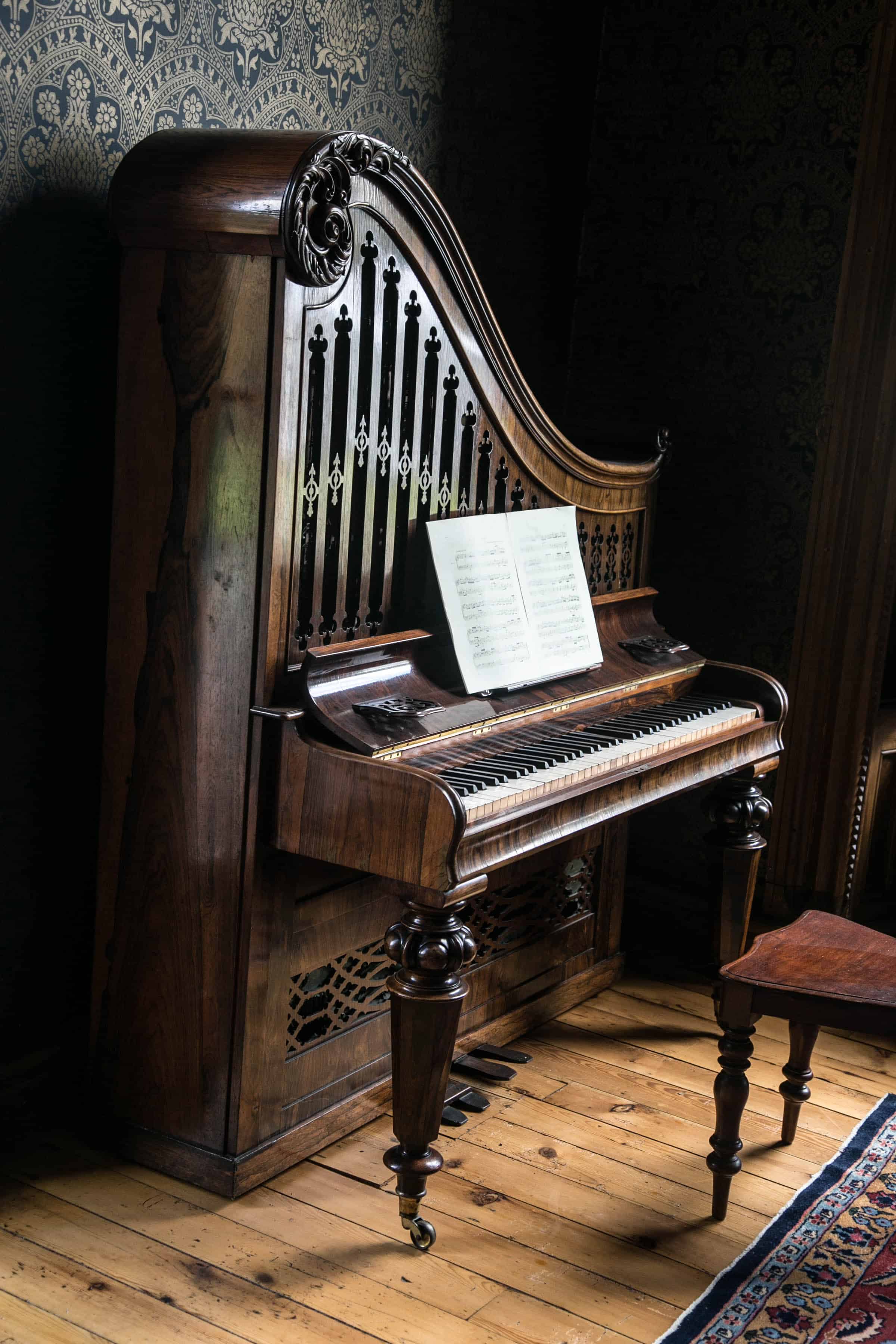This past July, I had spent two nights enjoying the warm hospitality of my friends Judy and Jimmy on their off-the-grid organic farm paradise (no running water or electricity; a river runs through it) in the village of Cloontia, County Mayo. I said goodbye and headed for the Museum of Country Life at Turlough Park, Castlebar, in the same county. I love folk museums that present the lives, traditions, crafts, festivals, and belief systems that had been sustained for hundreds of years by the people in the area or, in this case, the whole country. It was one of the national museums that filled out the portrait of Ireland through time, along with the rich archaeological museum in Dublin and the Irish National Heritage Park in County Wexford in the Southeast corner of the country.
Before entering the museum proper I passed through the Turlough Park Big House, a lovely restored 1865 limestone Victorian Gothic with a high-pitched roof and dormer windows, historically owned by the Fitzgerald family, who had been granted the estate by Oliver Cromwell in the 17th Century.

Turlough Park Big House, built 1865, County Mayo, Ireland, home of the Fitzgerals family, since Cromwell’s time.
Its drawing room was furnished from the Decorative Arts and History collections of the museum, to look the way it might have circa 1900. It features an exceptional piano, a Lyrachord, the only one in the world, whose encased strings rise above the keyboard like a harp. The left side of the keyboard operates like a piano (with hammers hitting strings) and the right side like a harpsichord (with plectra plucking strings). I would think that this would present a problem in volume, with the piano side drowning out the harpsichord side, but since I wasn’t allowed to touch it, I couldn’t find out.

Lyrachord piano—combines principles of a piano (hammers hitting strings) and harpsichord (plectra plucking strings) in one instrument. The only one ever manufactured.
The museum itself was quite rich, with exhibits on livelihoods, crafts, costumes, ceremonies, folk festivals (including a black and white video of mummers—maskers), the travelers (Ireland’s native gypsy-like wanderers), and geology, with recreations of a thatching workshop, an array of products made from grasses (rope, chairs, etc.) a blacksmith shop and others, and lively exhibits with extensive explanatory panels on Irish history over the past 150 years, including the Great Famine and the War of Independence from Great Britain.

Display of objects made from grasses (straw), in the National Museum of Country Life, Turlough Park, County Mayo, Ireland

Poster proclaiming independence of the Irish Republic from Great Britain, prior to the War for Independence. Museum of Country Life, Turlough Park, County Mayo, Ireland

Still captured from archival footage of a mummers’ parade, a traditional celebration in rural Ireland. Museum of Country Life, Turlough Park, County Mayo, Ireland
Leaving the museum, I encountered a magnificent cedar tree with multiple trunks, some of them transverse before rising vertically, a shape replicated by a stout lower limb.

Multi-Trunk cedar tree on the grounds of Turlough Park, County Mayo, Ireland, location of the Museum of Country Life












